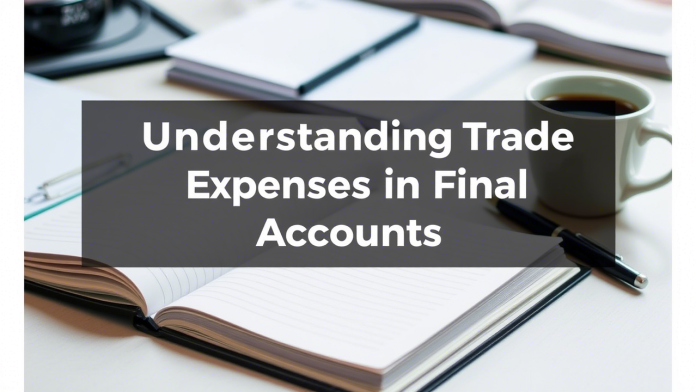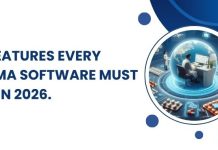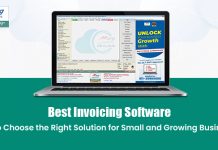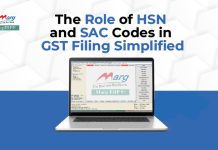In today’s competitive business landscape, proper financial management is the backbone of a thriving enterprise. One key aspect of managing your business finances is accurately accounting for trade expenses. In this comprehensive guide, we explore trade expenses, how they affect final accounts, and how they are classified and recorded in a trading account. We also delve into journal entries for paid trade expenses, clarify whether these expenses are direct or indirect, and explain why trade expenses are recorded as debits. Finally, we discuss how Marg ERP software can help you efficiently manage these accounting tasks to streamline your business processes.
What Are Trade Expenses?
Trade expenses are the costs incurred directly or indirectly in the day-to-day operations of a business that relate to its core trading activities. These expenses are associated with purchasing, selling, and delivering goods or services. Common examples include:
- Freight Charges: Payments for transporting goods from suppliers to your premises or from your business to customers.
- Packaging and Loading Expenses: Costs incurred in preparing goods for sale.
- Direct Labor Costs: Wages paid to workers directly involved in the production or handling of merchandise.
- Other Direct Costs: Expenses such as customs duty on imported goods or direct manufacturing supplies.
Unlike general administrative expenses (such as office rent or utilities), trade expenses are specifically tied to the procurement, production, or sale of goods. This focused nature makes them critical for accurate profit measurement and for preparing final accounts.
The Role of Trade Expenses in Final Accounts
Final accounts are a set of financial statements prepared at the end of an accounting period. They typically include:
- Trading Account: Used to determine the gross profit or loss by comparing sales revenue with the cost of goods sold (COGS), which includes direct trade expenses.
- Profit and Loss Account (Income Statement): Shows the net profit or loss after accounting for both direct and indirect expenses.
- Balance Sheet: Reflects the financial position of the business, incorporating the results from the trading and profit and loss accounts.
When we talk about trade expenses in final accounts, we are referring to how these costs are allocated between the trading account and the profit and loss account. Direct trade expenses (such as raw material costs, freight inward, and direct wages) are usually included in the trading account. In contrast, indirect expenses (like sales commission, advertising, and certain overheads) are recorded in the profit and loss account.
Accurate classification is essential because it affects your gross profit calculation, which is the foundation for further financial analysis and decision-making.
Trading Account: Expenses Basis and What It Includes
A fundamental question in accounting is: “Trading account is prepared on the basis of expenses”—but which expenses exactly? The trading account primarily incorporates expenses that are directly tied to the production or purchase of goods for resale. These expenses are critical for computing the cost of goods sold and thus, the gross profit.
Key Expenses Included in the Trading Account:
- Direct Materials: The cost of raw materials that become part of the final product.
- Direct Labor: Wages paid to workers who are directly involved in production.
- Freight Inward: Transportation charges paid to bring goods from suppliers to your business.
- Other Direct Expenses: Costs like packaging, loading, and handling that directly contribute to making the product saleable.
The emphasis here is on expenses that have a one-to-one relationship with the production or procurement of goods. Any expense that supports but is not directly involved in the production process—for example, marketing expenses—is typically recorded in the profit and loss account rather than the trading account.
Direct vs. Indirect Trade Expenses: Which is Which?
An important aspect of understanding trade expenses is differentiating between direct and indirect costs. This distinction is crucial when preparing both the trading account and the profit and loss account.
Direct Trade Expenses:
Direct trade expenses are costs that can be directly traced to the production of goods or the procurement of products for resale. These include:
- Raw Material Costs: The purchase price of materials used in production.
- Direct Wages: Salaries paid to production workers.
- Freight Inward: Transportation costs incurred in receiving goods.
- Customs Duties and Import Charges: Fees paid on imported goods that become part of your inventory.
Since these expenses directly affect the cost of goods sold, they are recorded in the trading account. When asked, “trade expenses is direct or indirect”, the answer depends on whether the expense can be specifically linked to production. Direct expenses will be recorded in the trading account and are essential in determining gross profit.
Indirect Trade Expenses:
Indirect expenses, on the other hand, are those that support the overall operations of the business but cannot be easily traced back to a specific unit of production. These include:
- Sales Commission: Fees paid to sales personnel.
- Advertising and Marketing Expenses: Costs incurred to promote the business.
- General Overheads: Expenses like rent, utilities, and office supplies.
These expenses are typically recorded in the profit and loss account because they are not directly associated with the manufacturing or purchase of goods. They still affect the net profit, but their allocation is done separately from the direct costs of production.
Understanding whether trade expenses direct or indirect can help you decide where to record each cost, ensuring accuracy in financial statements and compliance with accounting standards.
Journal Entry for Paid Trade Expenses
Proper bookkeeping requires that every transaction is recorded accurately using journal entries. A common question is: “What is the paid trade expenses journal entry?” Let’s break it down with a simple example.
Example of a Paid Trade Expenses Journal Entry:
Suppose your business pays ₹5,000 in freight charges for transporting goods from a supplier. The corresponding journal entry would be:
Trade Expenses Account Dr. [Amount]
To Cash/Bank Account [Amount]
In this journal entry:
- The Trade Expenses Account is debited because the expense increases the cost related to trading.
- The Cash/Bank Account is credited because the payment reduces your cash balance.
This entry is a standard trade expenses journal entry that helps record the expenditure in your books. The keywords “paid trade expenses journal entry” and “trade expenses journal entry” both refer to these kinds of entries, ensuring that the transaction is reflected correctly in your accounting system.
Trade Expenses is Debit or Credit?
A common point of confusion among business owners is whether trade expenses are recorded as debits or credits. The answer is straightforward: trade expenses are recorded as debit entries.
Why Are They Debits?
- Nature of Expenses: Expenses decrease the net income and, consequently, reduce the equity of the business. In accounting, an expense account increases with a debit and decreases with a credit.
- Impact on Profit: When you incur an expense, such as paying freight charges or direct wages, you record the increase in the expense account with a debit. This entry ensures that when you subtract expenses from revenues, you arrive at the correct profit or loss.
- Journal Entry Illustration: As shown earlier in the paid trade expenses journal entry, the expense account is debited, reinforcing that trade expenses are debit or credit—they are always debited.
This approach aligns with the general rule in double-entry accounting that expenses have a normal debit balance. Thus, whenever you record trade expenses in your books, you’ll always start with a debit entry.
Trade Expenses in Trading Account
When preparing a trading account, trade expenses form a crucial part of calculating the cost of goods sold (COGS). The trading account is designed to capture all direct expenses associated with bringing inventory to a saleable condition. Here’s how trade expenses are reflected in the trading account:
Components of the Trading Account:
- Opening Stock: The value of inventory available at the start of the accounting period.
- Purchases: Total goods bought during the period, less any purchase returns.
- Direct Trade Expenses: As discussed earlier, this includes direct materials, direct wages, freight inward, and other directly traceable costs.
- Closing Stock: The value of unsold inventory at the end of the period.
The trading account calculates gross profit by subtracting the total of the opening stock, purchases, and direct expenses from the total sales. Because only the direct trade expenses are included here, it answers the query: “trading account is prepared on the basis of which expenses”—specifically, those directly related to the production or purchase of inventory.
Indirect trade expenses, such as advertising or office rent, are not included in the trading account. Instead, they are recorded in the profit and loss account. This segregation helps in accurately determining the gross profit from trading activities before operating expenses are subtracted.
How Marg ERP Simplifies Trade Expense Management
Modern businesses require robust software solutions to handle complex accounting processes efficiently. This is where Marg ERP comes into play. Marg ERP is an integrated business management solution that helps streamline inventory management, financial accounting, and reporting—all critical for handling trade expenses.
Key Benefits of Using Marg ERP for Trade Expense Management:
- Automated Journal Entries: Marg ERP automatically records and categorizes trade expenses, ensuring that journal entries (such as those for paid trade expenses) are accurate and timely. This reduces manual errors and saves valuable time.
- Real-Time Financial Reporting: With Marg ERP, you can generate real-time reports on trade expenses, helping you analyze the impact of direct and indirect costs on your gross profit and net profit. This feature is essential for decision-making and strategic planning.
- Accurate Classification: The software aids in the precise classification of expenses as either direct or indirect. By automatically sorting expenses into the correct accounts, Marg ERP ensures that your trading account reflects only the direct costs while the profit and loss account captures the indirect expenses.
- User-Friendly Interface: Marg ERP is designed with ease of use in mind, making it simple for even non-accounting personnel to manage trade expense entries, monitor cash flows, and reconcile bank statements.
- Compliance and Audit Readiness: Marg ERP helps ensure compliance with accounting standards and regulatory requirements by maintaining a detailed ledger of all trade expense transactions. This is particularly beneficial during audits and when preparing final accounts.
Using Marg ERP, businesses can focus on core operations while the software takes care of complex accounting tasks. The integration of trade expense management into one unified system reduces the risk of errors, improves financial accuracy, and supports better decision-making.
Conclusion
Accurately managing trade expenses is crucial for clear financial reporting. Whether direct costs like freight and wages—or indirect expenses like advertising—are recorded as debits to reduce net income, proper classification in the trading versus profit and loss accounts ensures a precise determination of gross and net profit. By leveraging integrated tools like Marg ERP, businesses can automate journal entries, streamline expense tracking, and ultimately make informed, profitable decisions.
Read more:-
- Connected Banking in Marg Pharmacy Software: Streamlining Financial Workflows for Modern Pharmacies.
- How Billing Software with Barcode Billing Improves Operations at FMCG Stores.
- Zero-Stock or over-Stock? How does a Pharmacy Software Brings Balance.
- NDPS Act 1985: Why Every Modern Pharmacy Needs Advanced Pharmacy Billing Software
- Understanding DPCO 2013: A Complete Guide for Pharmacies and How Pharmacy Software Ensures Compliance




















